|
|
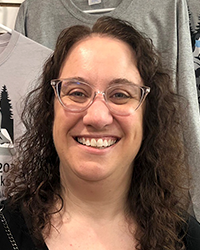 Jen Jen
|
 |
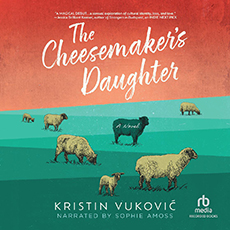
|
|
The Cheesemaker’s Daughter
Kristin Vukovic
I discovered this book on libro.fm, the website of our audiobook partner. I was drawn to it because much of it is set in Croatia, which is where my mother-in-law’s side of the family is from, although, when they lived there it was Yugoslavia of course. In The Cheesemaker’s Daughter, Marina, who grew up in Croatia, moved to New York as a young woman, married, and made a life for herself there. But that marriage is falling apart, and Marina’s family’s cheese business needs some help. Marina goes to visit and ends up staying. As we get to know Marina’s family—her kind and loving but patriarchal father, submissive mother, and brother who is more interested in playing soccer than attending to the family’s business, we also learn the backstory of Marina’s marriage. I’ll give you a heads-up, not long into this book, I got this weird feeling that maybe I had accidentally started reading a romance book—so I checked the publisher’s listing —Fiction—Women—Family Life—Cultural Heritage. No mention of romance, and as huge of a genre as romance is, I was pretty sure the publisher would list that if it were a fit. Then, I saw a blurb from another indie bookseller that included this, “...You might suspect a formula in the making, but The Cheesemaker’s Daughter is so much more. The novel explores love, loss, severed connections, and displacement….I also learned a lot about Croatia, the Bosnian War, and cheesemaking…” so I kept going and am so glad I did. This is just a darn good family novel, and I would have missed a gem if I’d quit early on.

Jen and Tom saw to it that our refreshments contained the same kind of cheese as the book mentioned!
|
| |
|
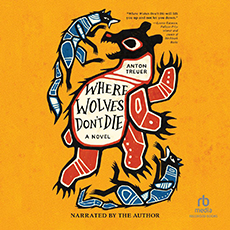 |
|
Where Wolves Don’t Die
Anton Treuer
If you haven’t heard me talk about this book, then I suspect you’ve either been away, like, on the moon, or you’ve gone deaf and might want to get that checked out. I’m not the only one talking about it, there has been a LOT of well-deserved buzz over Where Wolves Don’t Die, Anton Treuer’s first novel and first juvenile book. I often recommend that a book group periodically read a juvenile book, for a number of reasons—probably the one that’s most compelling for book group members is the chance to read and discuss a book, then pass it on to grandchildren to read and discuss it again. This is a perfect book for just that. So what’s the book about? Ezra lives in Minneapolis with his father, an Ojibwe language professor. After Ezra gets in a fight with Matt, a fellow student (or more accurately, a bully) Matt’s house burns down and it seems best to get Ezra out of town, or even better, out of the country. Ezra goes to stay with his grandparents in Canada. There’s a fair amount of Anishinaabe culture woven into the story (some of which Ezra is learning along with the reader), but I think what will be most appealing to kids reading this is the mystery and the outdoors adventure feel to it (think Hatchet by Gary Paulsen.) For adults, you’re going to LOVE the grandparents in this story, especially the grandfather. Treuer narrates the audiobook himself, and I think a Native narrator is crucial for this book. |
| |
|
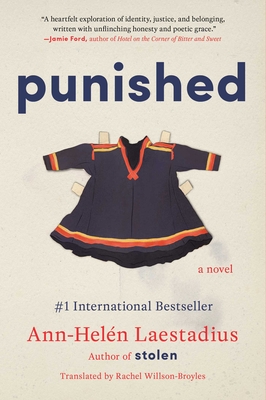 |
|
Punished
Ann-Helen Laestadius
Over the past few years, there’s been a lot in the news about Indian boarding schools in the U.S. and Canada but creating and running unethical boarding schools for the children of indigenous people didn’t only happen on our continent. Unfortunately. It also occurred in Scandinavia—the Sami, who are best known for their traditions of raising reindeer, were sent to nomad schools and treated much the same as Native Americans were at boarding schools. The title Punished refers to the question that runs throughout the novel, “if you were able to punish those who wronged you, would you?” The book follows the lives of five Sami who were sent to a nomad school in the 1950s. There’s Else-Maj - the littlest and most vulnerable; Marge, a bit of a mother hen; Jon-Ante, a boy caught between being part of the boys gang at school and doing what’s right; Anne-Risten, who is so often sick and denied proper care; and Nilsa, who is a bit of a bully and often embarrassed by his shy brother. Thirty years later, they’ve fared in radically different ways. What I’ve said so far sounds really dark, but I assure you, it’s captivating reading. The reader gets to really know these five people, their families, their histories, and how the abuse they suffered has affected them later in life.
Note: we had special permission to display and sell Punished at Afternoon In on January 29. It actually will be released on February 4, and we’ll make copies available then.
|
| |
|
 |
|
Red Stained: The Life of Hilda Simms
Jokeda Jojo Bell
I’m guessing you’ve never heard of a performer named Hilda Simms. She was born in 1918 in Minneapolis. Her father was from Louisiana, but he moved north to Minneapolis in 1917, presumably as part of the Great Migration, with so many other southern African Americans. As a young woman, Hilda moved from Minnesota to Virginia where she experienced more open hostile racism, and eventually to New York. Her big break came playing the lead in “Anna Lucasta” in the 1940s. The show was originally written as “Anna Christie” by Eugene O’Neill for an all-white cast, but was adapted for black performers and audiences and renamed “Anna Lucasta.” Hilda Simms was on track to become a nationally and internationally known performer. As the Soviet Union and the Cold War became so prominent in news, Hilda became aware of the differences in policies between the Soviet Union and the U.S. She publicly said complimentary things about the Soviets’ antiracism policies and even expressed a desire to study theater in the USSR. This was the beginning of the end for Hilda. McCarthyism was alive and well and adding names to lists like crazy. Her passport was revoked, and she was blacklisted by many American producers. Ironically, being a light-skinned African American, Hilda was often stuck being seen as too-white for blacks and just plain black to whites. She was a contemporary of Sidney Poitier, but Poitier managed to dodge being blacklisted despite having some of the same friends and mentors as Hilda Simms. The book isn’t all about Simms’ career and politics, it also includes her personal life, which of course in some ways was tangled up with career and politics. This book was published by the Minnesota HIstorical Society Press by a young woman who is a PhD student at the University of Minnesota. You could say that Minnesota was the bookends of Hilda Simms’ life—she was born here and she lived here the end of her life and is buried in Mendota Heights. The author’s interest and passion about this history really shines through in her writing. |
| |
|
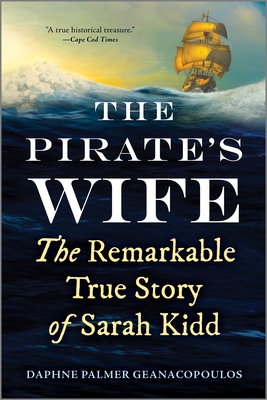
|
|
Pirate’s Wife: The Remarkable True Story of Sarah Kidd
Daphne Palmer Geanacopoulos
Do you know the difference between a privateer and a pirate? In the days of Pirate William Kidd, 1645 to 1701, it had to do with whether or not the local government approved of you. Both pirates and privateers pillaged, but the privateers shared some of the profits with the government. That’s it. At one time, William Kidd was considered a well-respected businessman. Pirate’s Wife is a quick-read blip of history. It focuses on Sarah Kidd, the third wife of William Kidd. There is of course mention of the thing that Pirate Kidd is most famous for—he supposedly hid treasure in a place that no one has ever discovered. What I found most interesting however was that not only was the marriage of the Kidds the third for the groom, it was also the third marriage for the 21-year old bride, Sarah. At a time when women were so dependent on the men in their lives for financial security, Sarah was able to establish herself as a successful New York merchant where other women would have crumpled. Once married to William Kidd, Sarah became not just his marriage partner but also his business partner, which was highly unusual at a time when women were seen as bad luck when it came to ships. I’m sure the author, who is a historian, could have written a much longer book, but believe me when I say this 200ish page book is a fairly quick and enjoyable read, despite the hardships it contains. I commend the author for being able to write a small slice of history for the armchair historian without getting too deep into the weeds. |
|
|
|
|
|
|
|
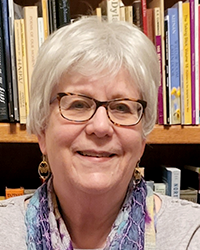 Sally Sally
|
|
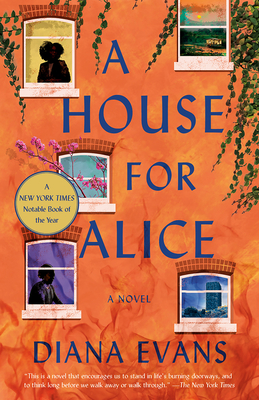
|
 |
A House for Alice
Diana Evans
Let’s go to London to explore the question of what makes a house a home, and perhaps to realize that families around the world are as messy as our own.
A House for Alice is a work of fiction, but it starts with an historical incident. On June 24, 2017, a fire started in a government-owned residential high-rise in London. 72 people died, the highest number of fatalities in a residential fire in England since the Blitz of World War II. We move into fiction with a second fire on the same day, started by an untended burning cigarette in the home of Cornelius Pitt, and ending with his death. The effects of these two fires play off each other throughout the book. Cornelius is living alone in the family home after his wife, Alice, left him. She’s an immigrant from Nigeria and, after 50 years in England, longs to return to Nigeria and the home Cornelius says he is having built there for her. It becomes clear that Cornelius was a tyrant who left psychological scars on the three grown daughters he and Alice had. Each of these women has a different reaction to the death of her father and to the future of their mother.
In The Wizard of Oz, Dorothy says, “There’s no place like home.” Her words reflect a positive feeling about home, but members of the Pitt family have a more nuanced and ironic reaction to the ideas of home and family.
The social and political backdrop of A House for Alice is fraught with issues, but the book is also full of “hope, humor, and humanity.”
Sometimes stepping out of our own culture helps us to understand it better, and to understand people of other countries better as well.
Some of the characters in A House for Alice also appeared in Evans earlier book, Ordinary People, but each book stands on its own. |
| |
|
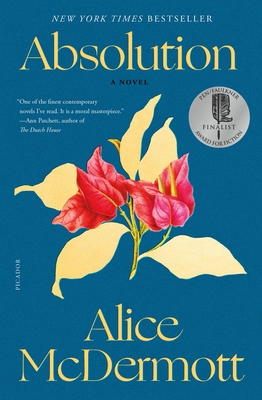
|
|
Absolution
Alice McDermott
I’m part of the generation which was profoundly shaped by our country’s war in Viet Nam. And it’s not just a part of the past. Both my husband and my brother are disabled veterans as a result of their service there. As you might guess, I’ve been reluctant to read about that period of time.
However, last year, I read Kristin Hannah’s The Women and lived through it. So, at the urging of friends, I decided to tackle Absolution. Like Hannah’s book, Absolution deals with American women in Viet Nam. However, it’s set in an earlier time, 1963 in Saigon. Unlike in The Women, these women are not in the military. They are the wives, the “helpmeets,” of civilian men serving in a variety of roles. For example, Peter, the husband of Tricia, the main character, is an attorney “on loan” to US Navy Intelligence.
When they arrive in Saigon, Peter gets right to work. Tricia, still a naïve, starry-eyed newlywed, has nothing worthwhile to fill her time. She reluctantly becomes friendly with Charlene, the mother of three and an experienced corporate spouse. Charlene is determined to “do good” in the midst of the misery she sees in Saigon and the surrounding countryside. Tricia tags along with Charlene’s incessant fundraising and Lady Bountiful visits to orphanages, hospitals, and even a leper colony.
Sixty years later, Tricia and Charlene’s daughter, Rainey, have reconnected. As they share their memories of Charlene and their shared time in Saigon, they grapple with the ironies of America’s involvement there and the moral obligations which still haunt them.
Absolution is a wonderful story, beautifully written. But it’s also the most challenging book on this year’s list. The involvement of the United States in Southeast Asia was not a one-time thing, but a pattern. How do individual citizens, in this case, women, respond in meaningful and appropriate ways? There’s much in this book to ponder and discuss. |
| |
|
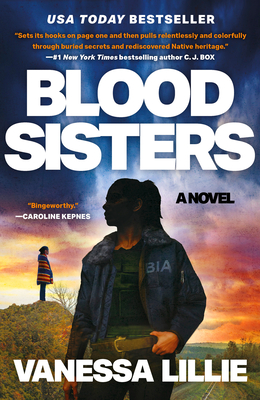 |
|
Blood Sisters
Vanessa Lillie
You can’t go home again. We’ve all heard it, and there is much truth in the phrase. Things change. The place you once called home has changed, as have the people you left behind. You have changed. Things will never be the same. This is something most of us have experienced and can relate to, though hopefully, in a less dramatic way than Syd Walker, the main character in Blood Sisters, does.
Syd is a Cherokee archeologist working for the Bureau of Indian Affairs in Rhode Island. She’s sent home to Oklahoma to investigate the discovery of a skull. The skull was found close to a place where Syd was nearly killed 15 years earlier. The violence of that night led Syd to leave Oklahoma far behind. But the skull is only the first mystery. Syd’s sister Emma Lou has disappeared. Syd is determined that Emma Lou not become another missing native woman whose disappearance is never investigated. So, Syd returns to Oklahoma to answer two questions: Where is Emma Lou? And who did the skull belong to?
Syd arrives in Oklahoma as a stranger. Her family, friends, and acquaintances barely know who she is now. But some things never change. Biases that existed when she was a child still exist. Rich vs. poor. Non-native vs. Native. People that never left home vs. Syd. And none of them, including Syd, can leave the past behind.
Realizing this is the key to solving the mysteries. Syd becomes relentless in her efforts, sifting through lies and half-truths, making shocking discoveries, and facing her past for the first time in her life.
Included in the story are details of Native American history and the mistreatment of Native people by the US government, both in the past and the present. Historically, the disappearance of Native women has been all but ignored. Syd feels compelled to uncover the facts, not only for the long dead, but also the recently disappeared.
This is a compelling read which is worth considering for your reading list.
Note: Blood Sisters is one of the books we’ll discuss at
our Fall Retreats.
|
| |
|
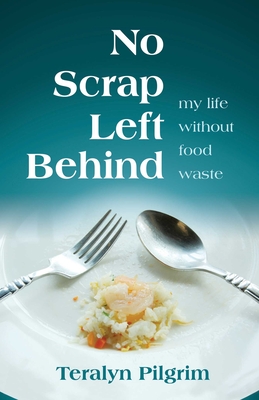 |
|
No Scrap Left Behind
Teralyn Pilgrim
Teralyn Pilgrim used to have a refrigerator like mine and maybe like yours. Sure, it had fresh food in it, but it also had stacks of Tupperware containers filled with leftovers. Some of the leftovers would be eaten but oops, despite her good intentions, others would end up in the garbage. Then she learned that 40% of the food produced in the United States goes uneaten and most of the waste is due to consumers—Teralyn, me, and you. At that point, she made a commitment to live without food waste. Her husband reluctantly agreed to go along with her, but it was a challenge. They had two preschool age girls who were picky eaters, and they couldn’t even foist leftovers on the dog, who was also a picky eater.
No Scrap Left Behind is the story of the author’s journey to eliminate food waste in her life. It’s told with great humor, but it was a serious quest, and she eventually got down to two pounds of waste a month. And that’s a solid figure, because she weighed it! Along the way, she saved about $100 a month on groceries. The book is full of the strategies she used to reduce waste, as well as some of her notable failures, and the research behind her efforts.
One day while I was reading this book, I cleaned out my refrigerator and was pretty unhappy to see how much food I needed to discard. I’m not shooting for zero food waste, but I am much more aware of it and determined to reduce it as much as I can.
The book is a quick read and, as I said, written with humor. It would be fun to read as a family or with friends who are concerned about saving money, climate change, and world hunger. It’s probably not a book for families with teenage boys. My experience is that there’s no food waste with one of them in the house! |
| |
|
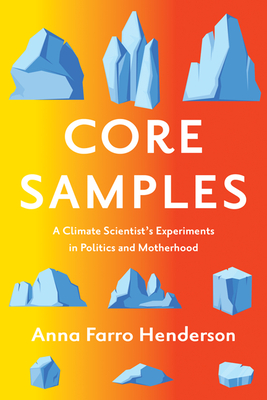
|
|
Core Samples:
A Climate Scientist’s Experiments in Politics and Motherhood
Anna Farro Henderson
Anna Farro Henderson had an unusual childhood, living in exotic places with her nomadic parents, but her career path started fairly conventionally. As a geology student, she did research on glaciers in Alaska, at a nuclear test site in New Mexico, and a meteor crater in Ghana, having adventures along the way. Also conventionally, she used that research to earn a Ph.D. She gradually began to realize that her gender, desire for a family, and need for fulfillment through art made her poorly suited for a traditional career in academia.
Her experience as a climate scientist led to a position as an environmental policy advisor to Al Franken while he was a senator. When he left that position, she moved to Minnesota and a similar role on Governor Mark Dayton’s staff. Along the way, she juggled the demands of her professional life with those of a wife and mother.
When Dayton’s term ended, she took a leap and made space in her life for the artistic expression which fed her. After a period of exploration, she now teaches writing at the Loft Literary Center, is a fellow at the University of Minnesota, and continues her work as a climate advocate. She even includes art experiences in her book events. A true Renaissance woman!
This book is a series of personal essays which are core samples of her life. Anyone interested in unconventional lives, the climate, and women who chart a different path for themselves will find it of great interest.
|
| |
|
|
|
|
|
|

Cascade
|
|
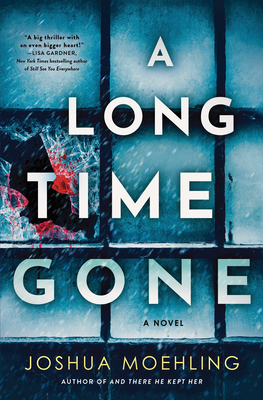 |
|
A Long Time Gone
Joshua Moehling
The third excellent installment in this Minnesota mystery series with a conclusion that made me wonder if it will end as a trilogy. Ben Packard is a police officer in a rural city, solving the many missing persons and murder cases that only seem to crop up in the small towns in crime novels. After being recently involved in a shooting, Ben is spending his time on administrative leave, but he still manages to come across an old case that seems fishy. Investigating this seemingly solved case sets Ben on a path to discover a suspicious death and hidden corruption. Taking place in February, this is the perfect chilly companion to the classic Minnesota winter we are experiencing.
Note: this book will be released February 4
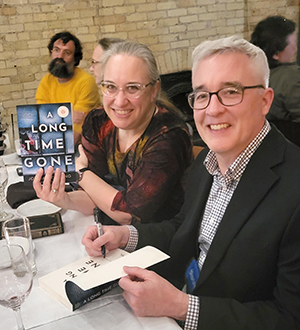
Jen chatting with Josh Moehling at a publisher’s dinner at our trade show last fall. |
| |
|
 |
|
A Short Stay in Hell
Steven Peck
A nearly endless library sounds like a dream destination to me, but in this novella, it is the hell the main character must escape. Soren is a devout Mormon, until he dies and learns that there is only one true religion (Zoroastrianism funnily enough) and his lack of faith in it means he’s headed to hell. But this version of hell is interesting–-Soren is placed in a gargantuan library full of all the books that could possibly be written, and he has to find the one that tells his life story to be released. What follows is a philosophical account of how Soren and the people he is trapped with cope with their new reality. This story is often dark, but I found it endlessly fascinating and I want everyone in my life to read it so we can discuss my many thoughts! |
| |
|
 |
|
Strange Pictures
Uketsu, translated by Jim Rion
Picture-based mystery is not a subgenre I’ve come across before this novel and I hope there will be more like it. The narrative is told through interconnected short stories, each with one or more pictures at the center of the mystery they explore. Everything begins with a drawing made by a girl who killed her mother and the analysis of the portrait by a psychologist about whether it indicates a continuing violent streak in the child. This introduction sets the scene for the story and demonstrates ways to think about solving each puzzle. I most enjoyed the great graphics used to unravel the mysteries throughout. |
| |
|
|
|
|
|
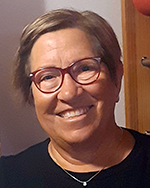
Doni |
|
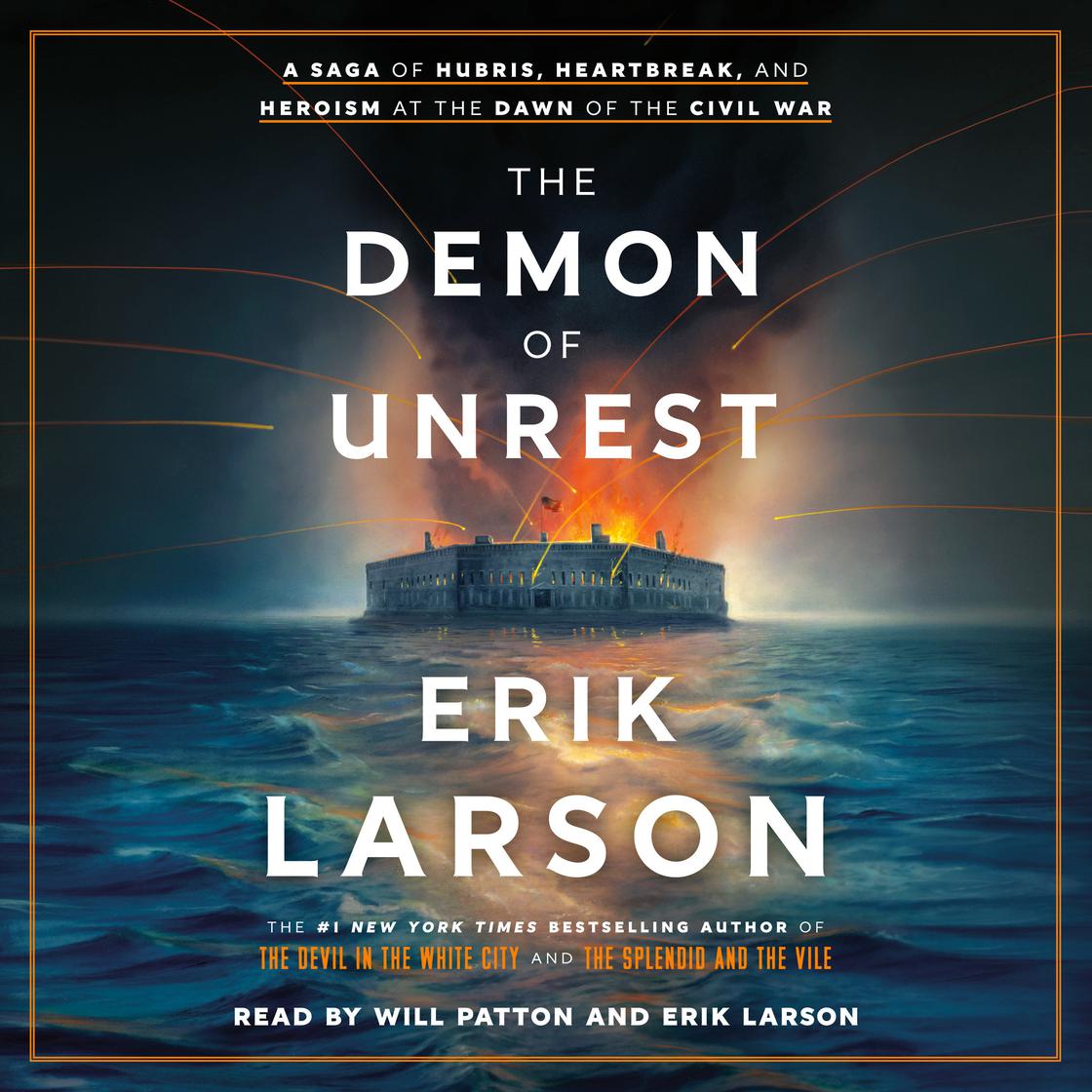 |
|
The Demon of Unrest:
A Saga of Hubris, Heartbreak and Heroism at the Dawn of the Civil War
Erik Larson
I have loved every book I’ve read by Erik Larson, and this is no exception. Set from just before the presidential election of 1860 through the battle of Fort Sumter in April of 1861, the book chronicles state secessions, rumors of presidential assassinations and military snafus.
With his usual deep dive into many sources, Larson eloquently depicts the passions of the North and South and the conflicting loyalties of characters torn between jobs and birthplace. The politics of the times are convoluted and ambition driven, and he discusses the challenges of Abraham Lincoln, who inherits a situation that was dire.
I have not been much of a student of the Civil War, and this was a great place to start. And this was my first 5 star read of 2025!
I listened to this on Libro.fm. The narrator was exceptional, reading the story as if he were telling a tale of the times, drawing the reader in with his slow, gentle, southern drawl.
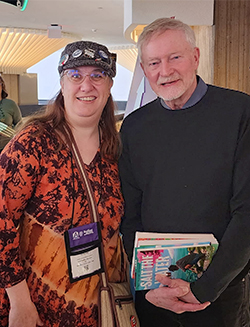
Jen with Erik Larson at a trade show in 2023. |
| |
|
|
|
|
| |
|
|
|
|
|

Hannah
|
|
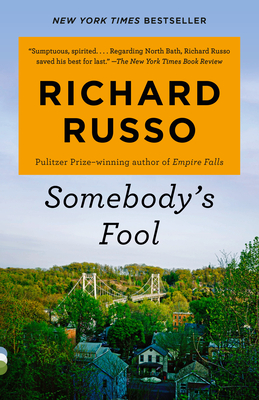 |
|
Somebody’s Fool
Richard Russo
Nobody’s Fool, which was made into a movie starring Paul Newman, is an old favorite of mine. Somebody’s Fool is the third in a trilogy. I’m sorry that I missed Everybody’s Fool I didn’t know about it until too late. I clearly missed a lot by reading them out of order but as long as you read the first book or saw the movie, you’ll get most everything in the new one.
The setting is upstate New York, a very small town that is being absorbed into a larger one. The main character is the son of Sully (Newman’s role). Russo is a marvelous writer, creating fine characters with fitting dialog. I thoroughly enjoyed spending time with them.
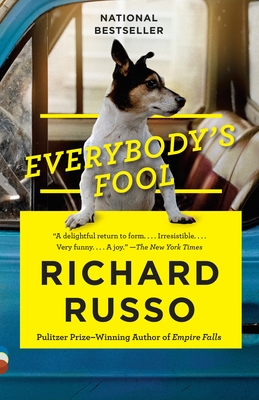 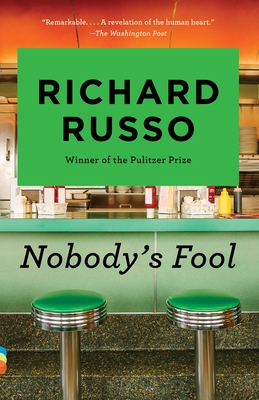 |
| |
|
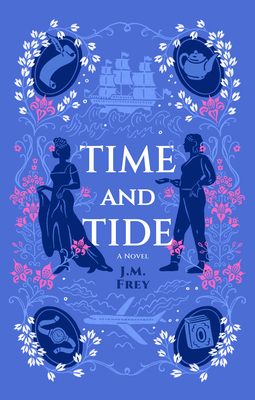
|
|
Time and Tide
J.M. Frey
This is like Gabaldon’s Outlander, but the writing is like that of Evanovich’s Stephanie Plum mysteries. With more explicit erotica, I must say. This isn’t great literature, but it’s a fun read.
The point of view is that of Samantha, a current, outspoken, bisexual young woman who suddenly ends up in the ocean in Jane Austen’s era. (Austen does not appear in the story, but each chapter starts with a quote from her works.) Since Samantha didn’t come through stones, there’s no hope for her to ever return to today. Her mistakes and triumphs will determine the rest of her life.
|
| |
|
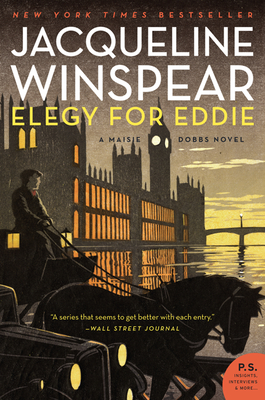
|
|
Elegy for Eddie
Jacqueline Winspear
If you aren’t acquainted with Maisie Dobbs, she starts in her first book as a WWI nurse from humble origins who becomes an investigator after the war. Elegy for Eddie is set in 1933 and involves a neurodivergent man who was born in a stable and has a remarkable affinity with horses. (The character was inspired by an actual man, but he didn’t have some of Eddie’s other talents.)
Maisie is now well-to-do but is still more comfortable with workers than with many of the prosperous, society sorts she also rubs elbows with. She meets Winston Churchill in a country visit, but it’s not clear yet whether Churchill has any future with the government. It isn’t even clear whether he is on the right side of history. It’s a somber situation, but not one that will stop Maisie from finding out what happened to Eddie, and why.
|
|
| |
 |
  |
 |
|
|
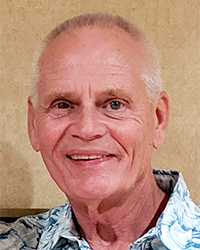
Lee
|
 |
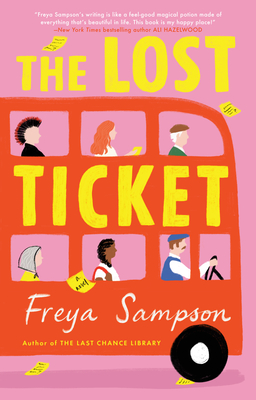 |
 |
The Lost Ticket
Freya Sampson
Libby has been dropped by her boyfriend of 8 years. Not just dropped but kicked out of the house to make room for his new girlfriend. And left without a job, as she was working in the boyfriend’s business. She is headed for her sister’s home in London, to fill in as nanny for her sister’s boy.
Riding the bus, she encounters Frank, an elderly man with an interesting tale. On this bus route in 1962, he met a beautiful girl. They planned to go to the National Gallery, but he lost the bus ticket with her phone number. Since then, he has kept riding the bus, hoping to find her.
Yes, indeed. This is maybe a bit too sweet of a story for some readers, but if a crotchety old grump like me can enjoy it, you can, too.
|
| |
|
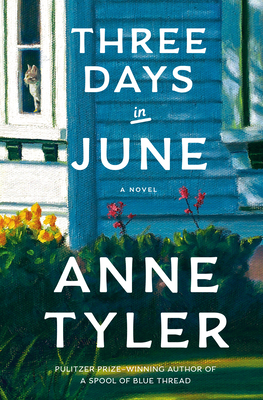
|
|
Three Days in June
Anne Tyler
This is a short (176 pages) novel that is quite enjoyable. Gail Barnes probably loses her job or possibly quits. This is not a great start for the upcoming weekend, when her daughter is getting married. Then Gail’s ex arrives unannounced, with a cat, needing a place to stay.
Gail is socially awkward … perhaps not really a “people person”. When her daughter brings up a recent infidelity by her fiancé, things are on the verge of coming apart. And it also brings up a reminder of the reason why Gail and Max are no longer married.
The talents of Anne Tyler as a story-teller shine throughout, and I am betting that most readers can identify some of these characters in their own families.
Note: this book will be released February 11.
|
| |
|
|
|
|
|
|
|
Would you like to be a guest reviewer?
Email Sally at sally@beagleandwolf.com. |
| |
|
|
|
|
|
— page top —
|
|

































